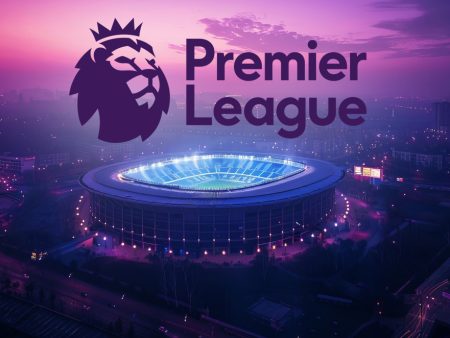
The true cost of glory: a deep dive into what Premier League players earn, and how top teams stack up when it comes to payroll.
When fans chant from the terraces, they’re not just singing about trophies they’re singing for the stars who pocket millions each year to don their club’s colours. The Premier League is the financial powerhouse of global football, where salaries and wage bills dwarf those of even the biggest clubs in La Liga, Serie A, and the Bundesliga. But just how much do Premier League players earn? Which club is splashing the most cash? And is a Premier League salary cap just around the corner?
Let’s pull back the curtain on what it really costs to be a top player in the EPL.
What Is The Average Premier League Salary?
It’s no secret that the Premier League pays well but the numbers are enough to make your eyes water. The average Premier League salary for the 2025–26 season is estimated at around £80,000 per week, translating to more than £4 million per year. And that’s just the average. Some stars rake in two or three times that.
Thanks to bumper television deals and worldwide popularity, Premier League clubs have the cash to splash. The league’s unmatched commercial reach allows even mid-table sides to offer footballers higher wages than top-tier clubs abroad. Put simply, Premier League players earn more because the league is minting money and players are primarily the main attraction.
How Are Club Wage Bills Calculated?
A club’s wage bill is the grand total of what it pays its squad over the course of a season salaries, bonuses, image rights, loyalty payments, the lot. It’s a better indicator of spending than just looking at transfer fees.
Take Manchester City, for example. Their wage bill tops £224 million more than double that of Aston Villa’s. The cash doesn’t just go to marquee signings either; even squad players are pulling in tidy sums, underlining just how much Premier League sides invest in depth and quality.
When clubs like Arsenal or Manchester United get it right, the results follow. But ballooning wage bills without silverware can spell trouble just ask Chelsea.
Which Clubs Have The Highest Payroll?
City have the highest payroll in the league, and they’re not shy about it. With the likes of Kevin De Bruyne, Erling Haaland, and Jack Grealish on megabucks, it’s no surprise that Manchester City are top of the spending charts.
Here’s how the top five stack up for the 2025–26 season:
- Manchester City – £224 million
- Manchester United – £215 million
- Chelsea – £210 million
- Liverpool – £200 million
- Arsenal – £190 million
The Premier League’s top spenders aren’t just flexing their financial muscle they’re building dynasties. But spending big doesn’t guarantee success, as Manchester United have found out.
Who Are The Highest Paid Premier League Players?
Some players are on another level on the pitch and on the payslip. The highest-paid Premier League players are pulling in obscene amounts each week.
At the top of the tree is Erling Haaland, earning around £500,000 a week, with Mohamed Salah and Kevin De Bruyne close behind. These aren’t just wages they’re statements of intent.
Here’s a quick peek at the biggest earners:
- Erling Haaland (Manchester City) – £500k/week
- Mohamed Salah (Liverpool) – £400k/week
- Kevin De Bruyne (Manchester City) – £400k/week
- Casemiro (Manchester United) – £350k/week
- Raphaël Varane (Manchester United) – £340k/week
- Marcus Rashford (Manchester United) – £325k/week
- Jack Grealish (Manchester City) – £300k/week
- Bernardo Silva (Manchester City) – £300k/week
- Bruno Fernandes (Manchester United) – £300k/week
- Virgil van Dijk (Liverpool) – £300k/week
These footballers get paid more in a single week than most people do in a year. Welcome to the top table.

How Do Average Salaries Vary Across The League?
There’s a stark contrast between the elite and the rest. While the stars rake in six-figure salaries, the average Premier League player earns between £30,000 and £70,000 a week still more than enough to turn heads.
At newly promoted clubs or among academy graduates, you’ll find wages closer to £15,000–£25,000 a week. But as soon as they make a splash? You’d better believe their agents are on the phone asking for more.
Even benchwarmers in the Premier League can earn more per month than seasoned starters in most other leagues.
Should There Be A Salary Cap?
As the numbers soar, calls for a Premier League salary cap grow louder. The idea is to make the league more competitive and financially stable a salary cap similar to the NBA or NFL model.
Backers say it would prevent financial disparity and bring a level playing field. But opponents argue it would hinder clubs on the European stage and dampen the quality that makes the Premier League so thrilling.
While the NBA and NFL could go cap-in-hand and control spend, the Premier League’s global footprint and the massive commercial deals and wealthy owners that bankroll it makes any cap a tough sell.
Why Do Premier League Players Earn So Much?
It’s a perfect storm. The league through massive commercial deals, unmatched global exposure, and billionaire owners has created a cash-rich environment. That’s why players are primarily drawn to the Premier League.
Add Premier League betting, international rights, shirt sponsorships, and merchandising and you’ve got a league that’s practically printing money. Naturally, the biggest stars want their cut.
It’s not just about what they bring on the pitch. Top players are brands. They sell shirts, drive viewership, and elevate the league’s status globally. So when clubs bring in Gabriel Jesus or Declan Rice, they’re investing in much more than just footballing ability.
Is The Spending Sustainable?
For the heavyweights, yes. For everyone else? That’s the million-pound question.
Clubs like Arsenal and Manchester City can afford the outlay thanks to deep-pocketed owners and commercial deals. But others are on a tightrope. Fail to reach the Champions League, and the consequences can be dire.
Chelsea’s recent spending spree led to FFP scrutiny after a season of underperformance. That lack of on-field success despite a high wage bill is the cautionary tale others should heed. The Premier League remains the pinnacle, but even the richest clubs must tread carefully.
Will Ticket Prices Drop?
Fans would love to see it, but don’t hold your breath. As footballers in the United Kingdom command record salaries, many supporters feel priced out of the game.
You’d think with all the broadcast revenue, clubs could afford to ease the burden. However, with player earnings figures soaring, ticket prices dropping rarely makes it onto the agenda. The balance between fan loyalty and financial demands remains precarious. For now, those sky-high wages are being subsidised by loyal match-goers, TV subscribers, and shirt-buyers across the globe.
How Do Premier League Salaries Compare To Other Leagues?
The Premier League is in a league of its own literally. Even elite La Liga, Serie A, and Bundesliga sides struggle to keep pace.
In Spain, only Real Madrid and Barcelona can compete. In Italy and Germany, the top earners are still on significantly less than their EPL counterparts. The success of the Premier League model means stars like Bernardo Silva, Kevin De Bruyne, and Erling Haaland are unlikely to be lured abroad anytime soon. The money’s too good, the exposure too vast.

Conclusion
The Premier League isn’t just the most watched football league in the world it’s the wealthiest by a country mile. With average salaries pushing past £4 million per year, and top stars banking hundreds of thousands each week, it’s a financial behemoth.
But with that money comes scrutiny. How sustainable is this spending? Can smaller clubs compete? Should a Premier League salary cap be introduced? What’s certain is this: the Premier League will continue to be the epicentre of world football for the foreseeable future, fuelled by massive commercial deals, wealthy owners, and a global fanbase that just can’t get enough.
It’s a game of goals, glory and now more than ever, gargantuan wages.









